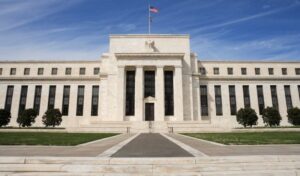
Legal scholar argues that bank stress tests should be abandoned or made more robust.
In response to the difficulties facing the nation’s leading financial institutions after the 2008 economic crisis, U.S. regulators unveiled new rules mandating that leading banking institutions conduct biannual “stress tests” in compliance with the Dodd-Frank Act.
Recently, the Federal Reserve publicly released new results from these stress tests. The results demonstrate whether the nation’s largest banks have sufficient capital in reserve in order to absorb potential economic losses and support adverse economic conditions.
The release of the Fed’s test results has sparked renewed attention to an ongoing debate over the value of basing capital requirements on stress tests. Scholars like Itay Goldstein and Haresh Sapra have previously argued that stress tests and subsequent public disclosure promote financial stability and market discipline.
But more recently, in a forthcoming article, Mehrsa Baradaran criticizes bank regulators’ reliance on hypothetical scenarios created in stress testing and argues that a “speculative” paradigm for banking regulation should be abandoned.
Baradaran says that stress tests are one example of “regulation-by-hypothetical,” a term she uses to refer to Dodd-Frank rules that require banks to predict potential crises and weaknesses in order to form a basis for regulatory intervention.
Baradaran argues that the regulation-by-hypothetical regime should be abandoned because it relies on the assumption that it is possible for financial institutions to imagine and prepare for every negative scenario. She notes that the Fed uses historical modeling methods in designing its hypotheticals, which, Baradaran argues, cannot adequately anticipate the unprecedented events that are often the unforeseen catalysts of financial crises.
Baradaran also points out that the Fed struggles with a dilemma of conflicts in regulating financial institution risk without simultaneously causing market panic. The Fed creates, administers, and publishes stress tests, which, she says, can result in a conflict of interest. Baradaran argues that if the Fed creates tests that are too stringent, then financial institutions may not pass, leading test disclosure to potentially cause market panic. On the other hand, if the Fed produces tests that are not stringent enough, systemic financial risks may go unnoticed while markets are falsely reassured of bank safety.
Baradaran states that this problem is not theoretical and suggests that, during the initial round of stress tests, the Fed was concerned with calming the market. Since 2009, the Fed has conducted four rounds of stress testing, with the majority of banks passing.
Notably, in the most recent testing round, one of the more prominent banks, Citigroup, reportedly failed the test for the “second time in three years.” Its shares also reportedly dropped more than five percent in the days following the Fed’s announcement of the results.
Ultimately, Baradaran insists that if the Fed claims to administer impartial and rigorous stress testing and banks pass, then markets are led to believe that the government will support banks with market subsidies in the event they are actually unstable. Creating, administering, and releasing testing results, she claims, will only support the impression of regulators’ willingness to insure firms if they do collapse, and in so doing it may add a layer of federal subsidy to the already heavily subsidized banking industry.
Baradaran concludes with recommendations for bank regulators to abandon hypothetical risk scenarios in order to remedy the shortcomings of this new banking regulation paradigm. However, if regulators are to continue with regulation-by-hypothetical regimes, she instead recommends borrowing from military war games models.
Baradaran suggests that military war games models—which, unlike stress tests, would be based on participants’ crisis responses—capture a firm’s reaction to specific market events. She proposes that these responses be subsequently used to determine financial market impact and might increase hypothetical tools diagnostic value.



